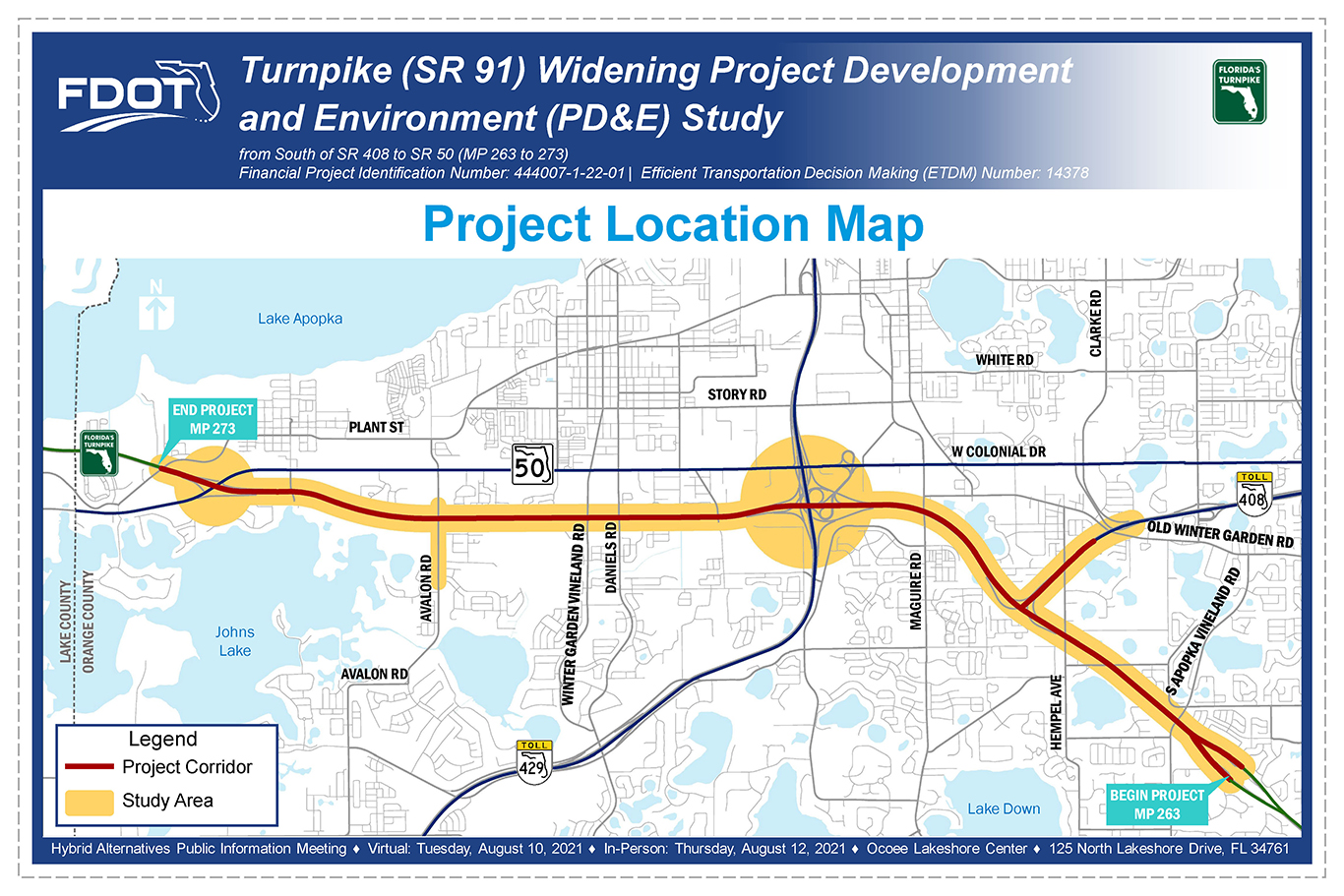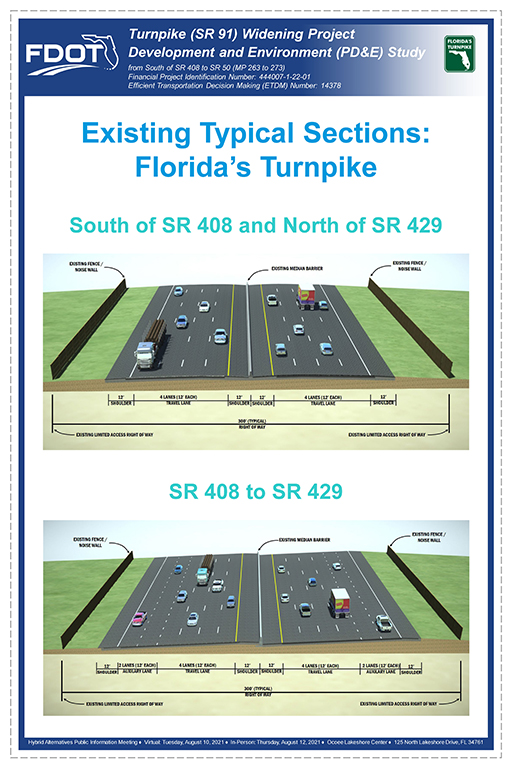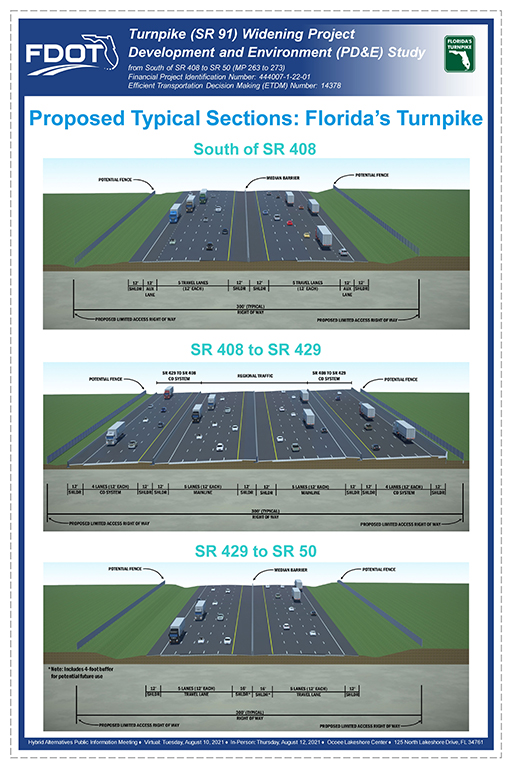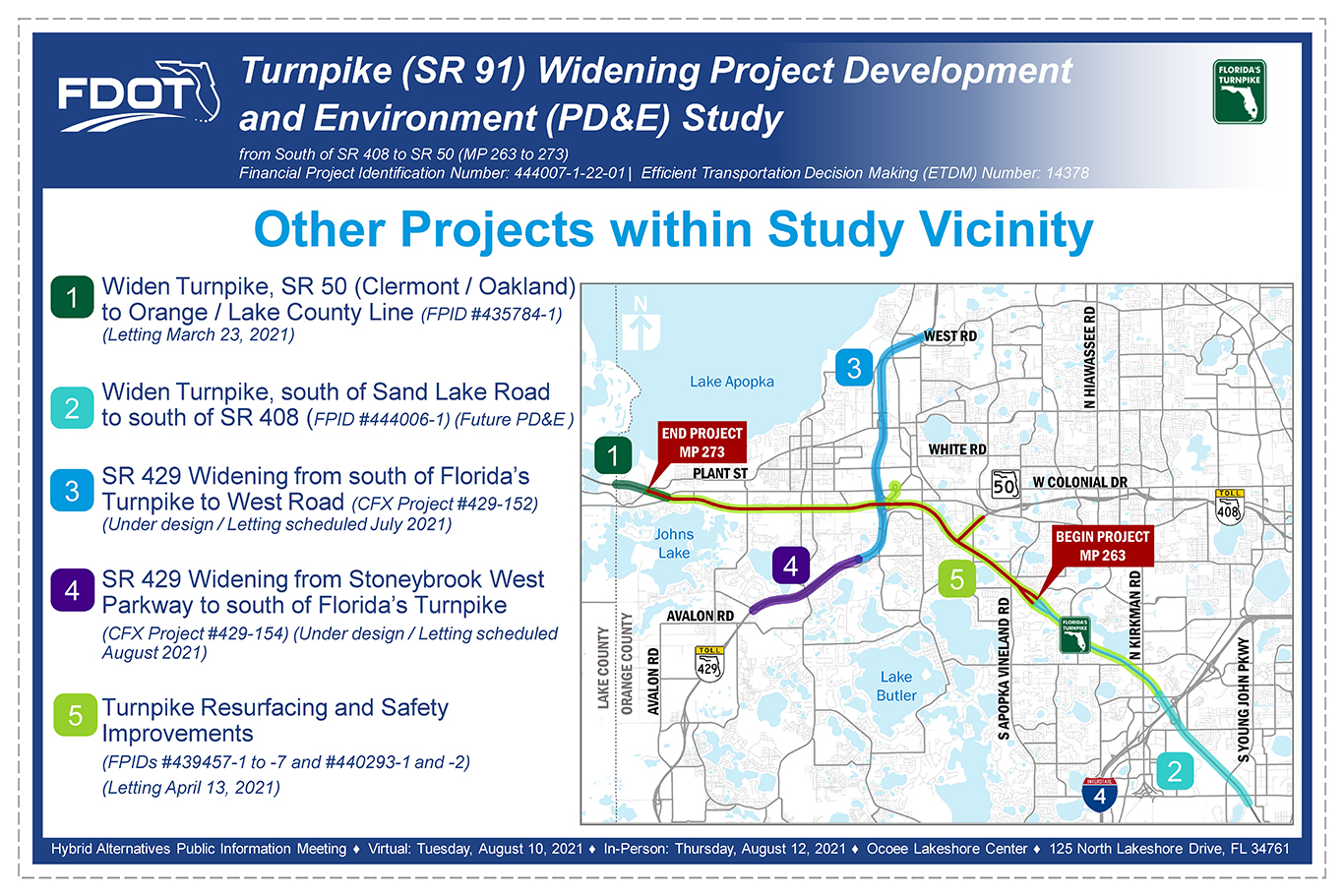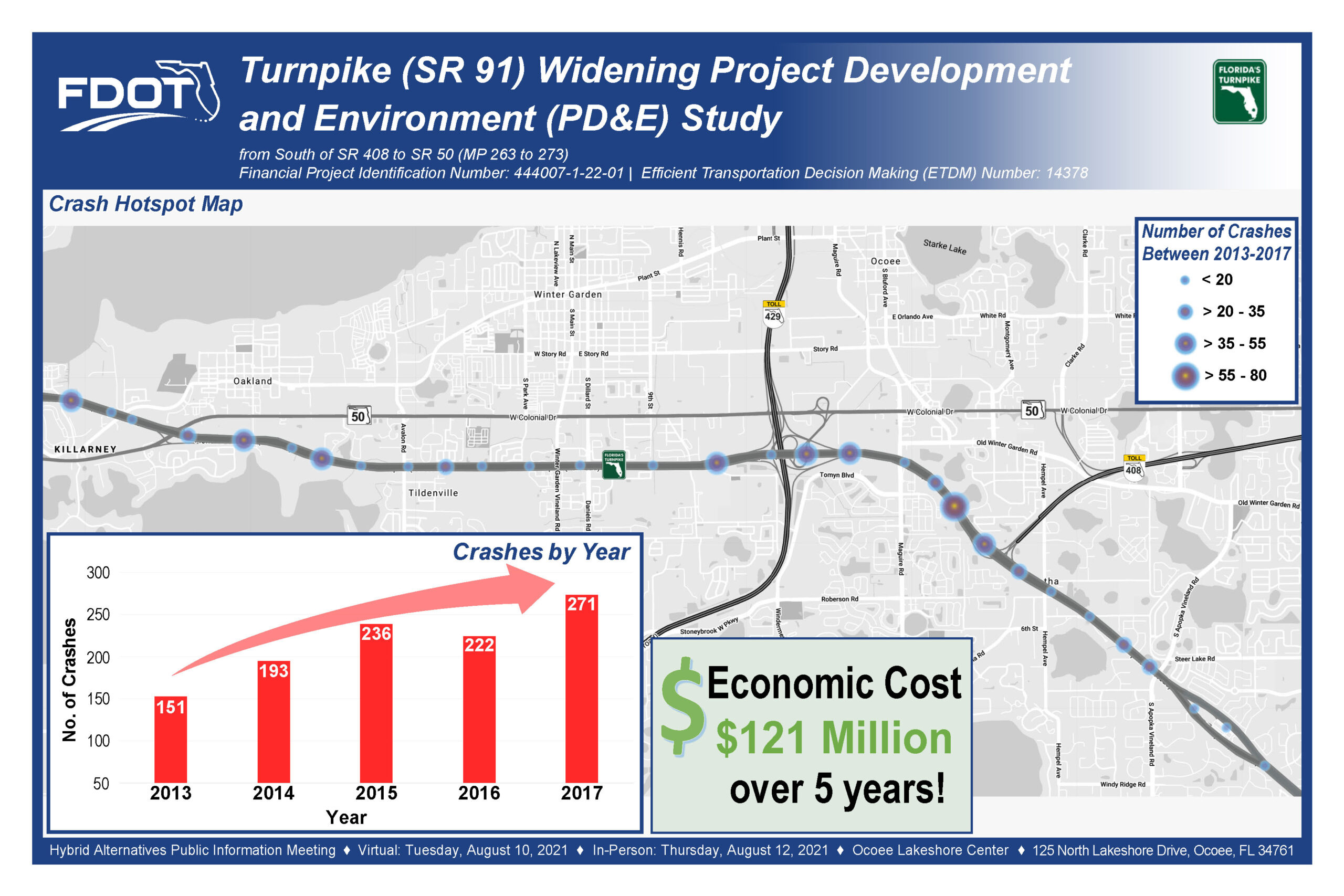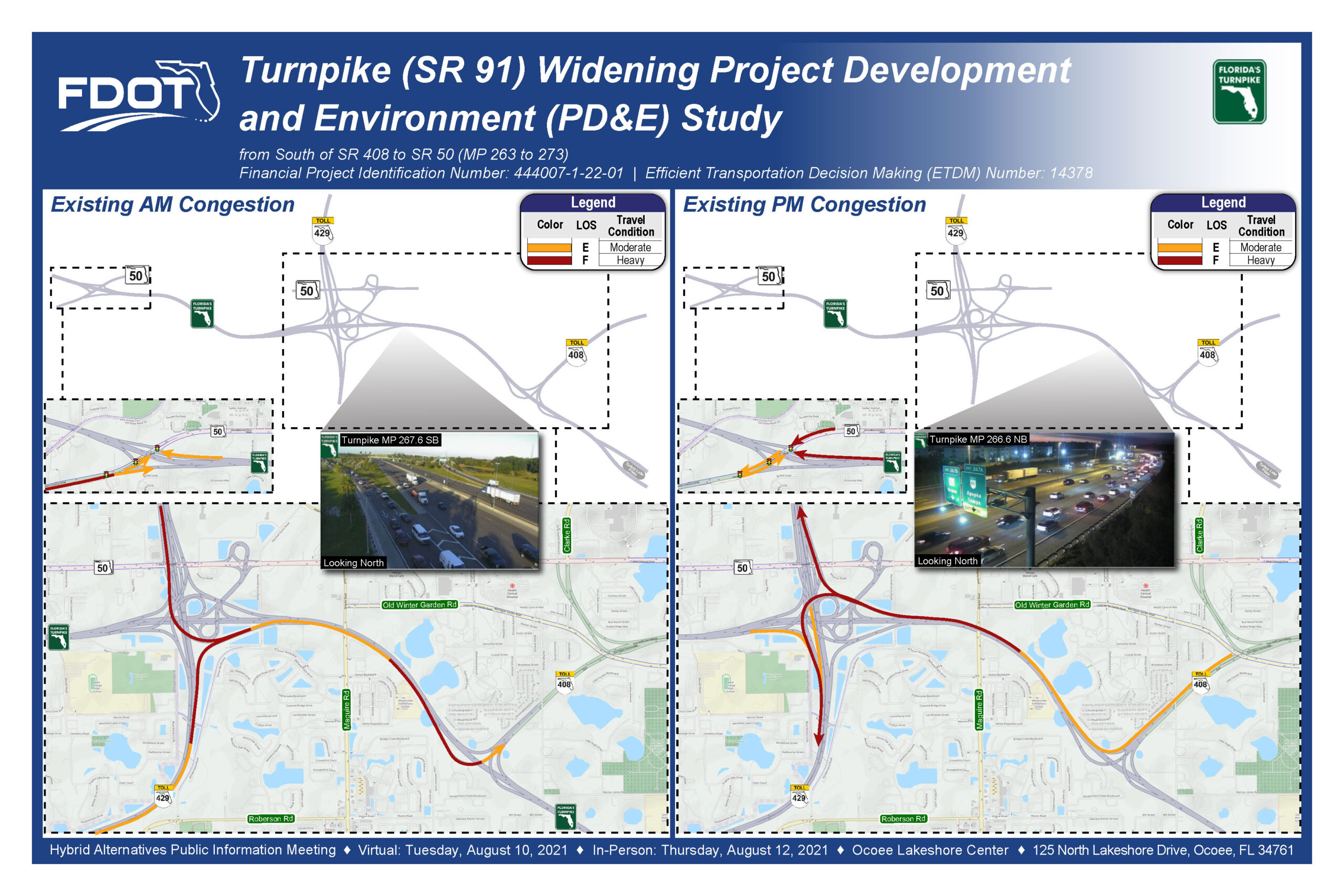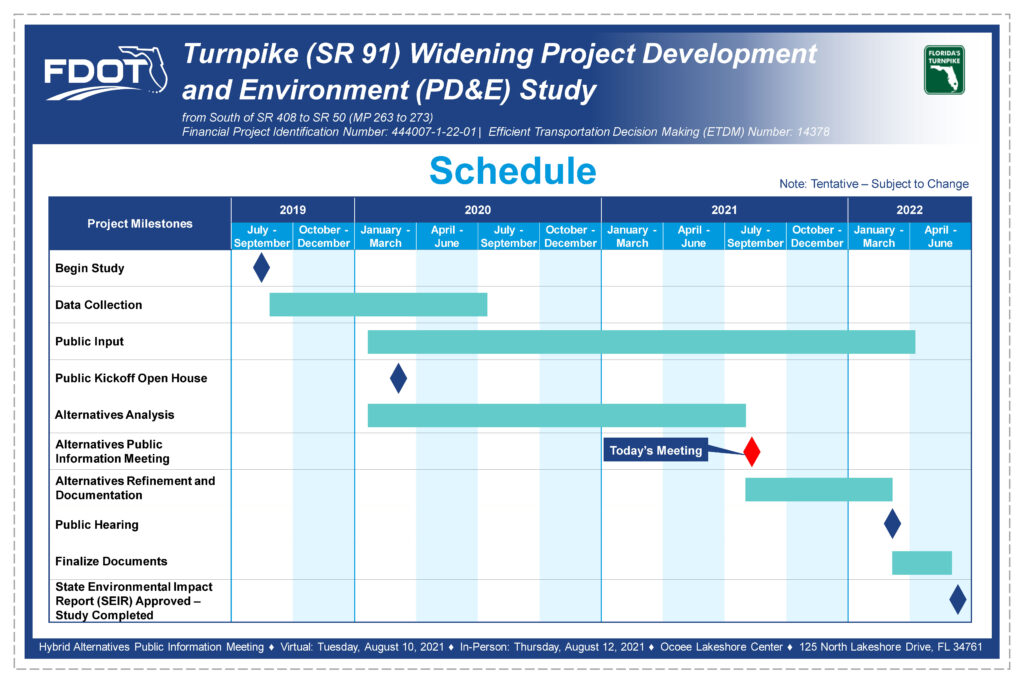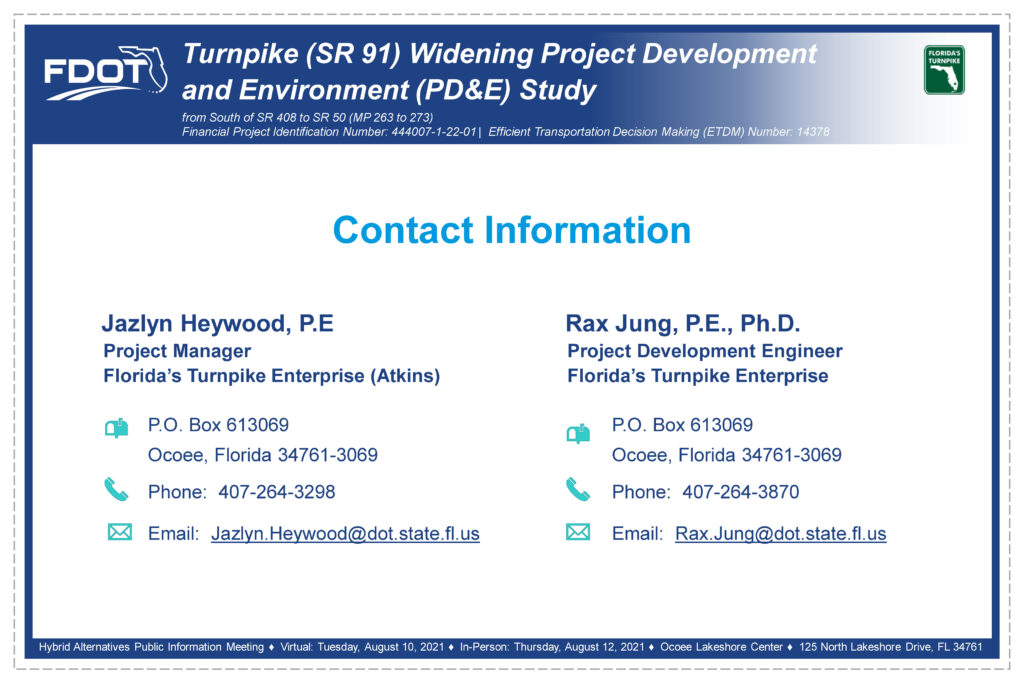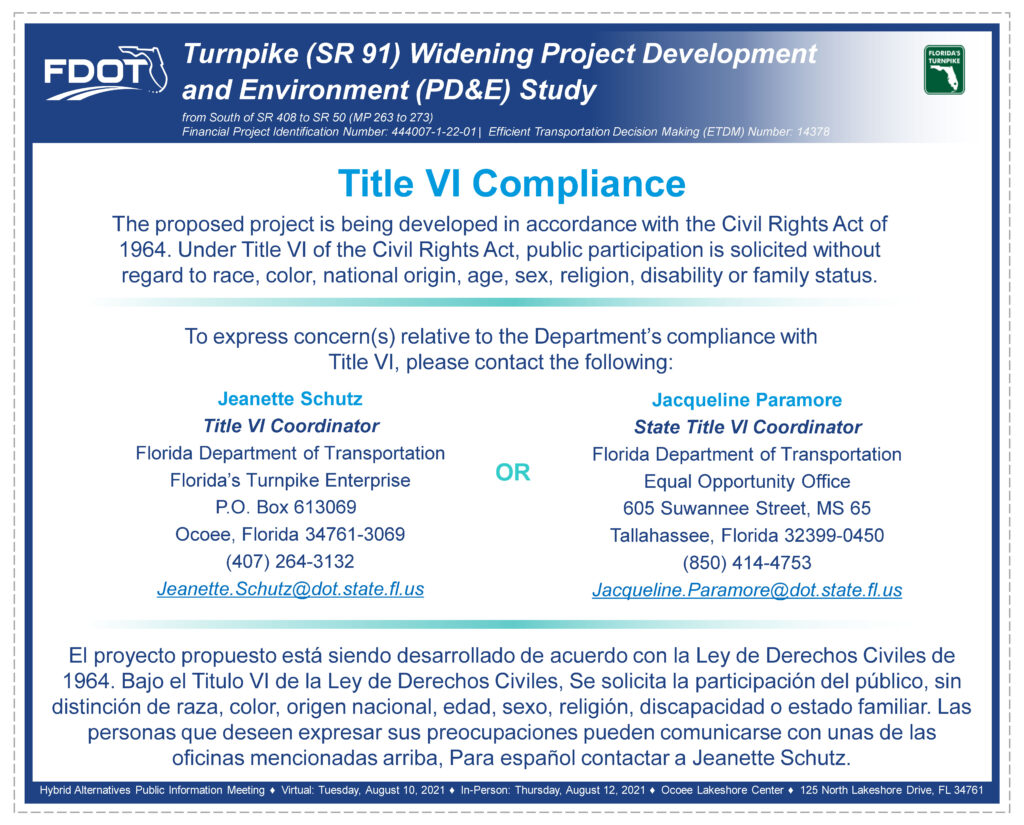The mainline improvements were broken into three unique sections. The first segment extends from the beginning of the project, near the Turkey Lake Service Plaza to SR 408. The second segment is between SR 408 and SR 429. The last segment is from SR 429 to SR 50.
The proposed improvements for the first segment, from the Turkey Lake Service Plaza to SR 408, include five thru travel lanes and one auxiliary lane in each direction. There are currently four thru lanes in each direction on this stretch of Florida’s Turnpike, so the proposed improvements would add a total of two lanes in each direction.
The second segment, from SR 408 to SR 429, proposes a Collector-Distributor system, or CD system. The Turnpike mainline would be widened to five lanes in each direction serving the regional traffic passing through this segment. An additional four lanes in each direction would be provided along the outside in the form of a collector road, that will serve the high volume of traffic traveling between SR 408 and SR 429. These outside lanes will allow this system-to-system traffic to flow freely without having to interact with the mainline traffic, which will improve traffic operations and safety. The collector lanes will be barrier wall separated from the regular thru lanes.
The proposed improvements for the third segment, from the SR 429 to SR 50 includes five thru lanes in each direction. There are currently four thru lanes in each direction on this stretch of Florida’s Turnpike, so the proposed improvements would add one lane in each direction.
All graphics are available for download on the main project website (www.Turnpike408to50.com) under the Documents – Alternatives Public Information Meeting section.

